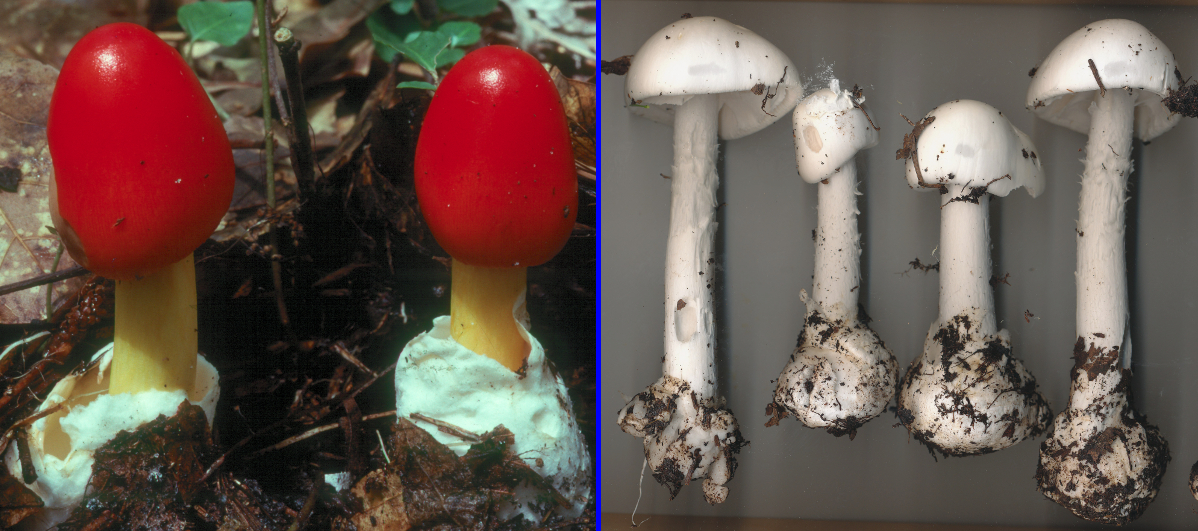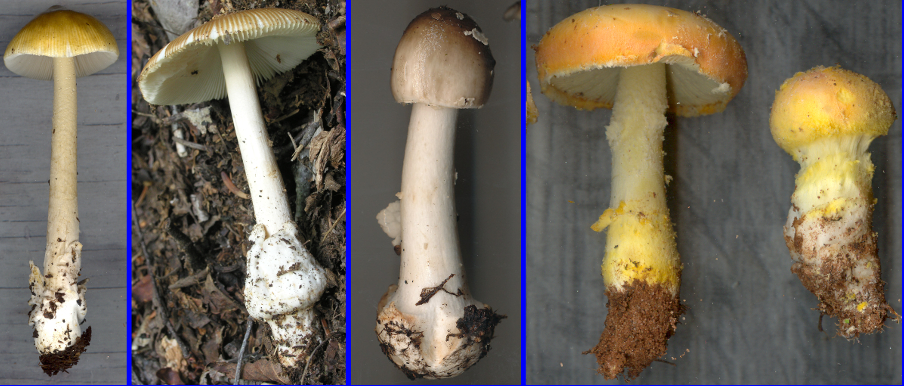VOLVA

The two pictures above show two well-known species of Amanita, A. jacksoniana and A. bisporigera. Both species show a prominant sack-like structure at the base of the stipe, called the volva or cup. The volva is the remains of the universal veil, discussed in detail in the section dealing with the annulus. When very young the entire mushroom is enclosed by the universal veil, which breaks as the mushroom expands to leave traces on the cap and stipe. The volva is just a special case, found mainly in some species of Amanita, Volvariella, and some other mushrooms, where the broken universal veil persists as a cup at the base of the stipe. As most readers of these pages know, the genus Amanita contains some deadly poisinous species, so it's very important, if you plan to eat any of your collections, to dig down and collect the whole mushroom to determine whether a volva is present or not. It is not the intention of these pages to discuss the edibility of mushrooms, only to warn against disastrous mistakes.

Not all species of Amanita have a sack-like volva surrounding a bulb. Members of the genus Amanita, Section Vaginatae often have the sack-like volva, but the base of the stipe is hardly swollen at all. This group also lacks an annulus, so characteristic of most of the genus. The species of this section are notoriously difficult to identify, so, for now, the first two photos in the set at right remain unnamed. Notice in the panel second-from-left how the volva flares out above the unswollen stipe base. This is entirely a characteristic of the volva and not the stipe, which remains unswollen.
The other two photos illustrate other features of the volva. The one second-to-right is A. brunnescens, a species with a strongly bulbous stipe and with the bulb splitting vertically. The volva is found as a small fringe around the upper margin of the bulb. The rightmost panel is a photo of Amanita wellsii. This species has a bright yellow and rather powdery universal veil that is very fragile. It is difficult to find traces of the volva; these are mostly seen in the soil as yellow flakes, but sometimes, as in our picture, a few fragments may remain attached to the stipe.